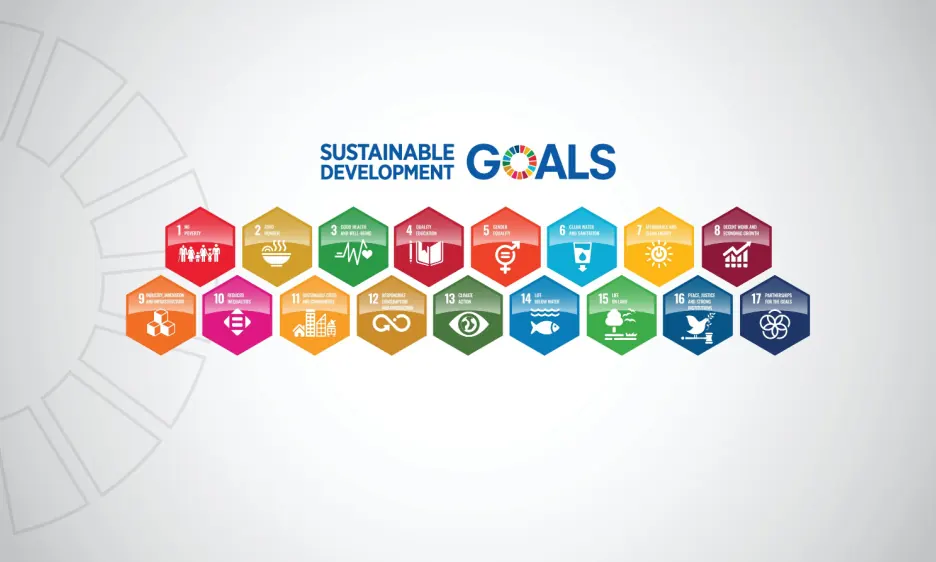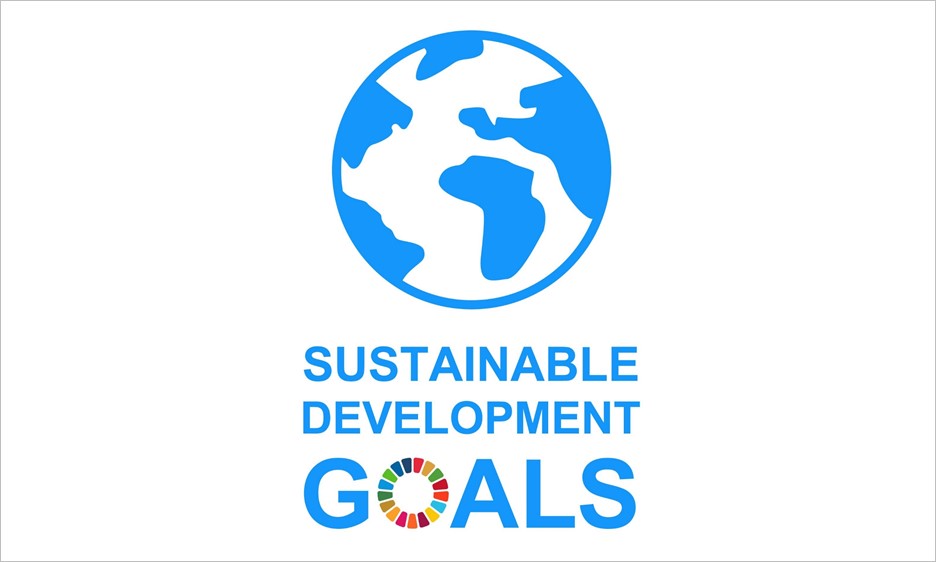
UN SDGs and their Impact on Corporate Reporting
 Share
Share
 Copy Url
Copy Url

On 25th September 2015, the United Nations’ Sustainable Development Goals (UN SDGs) were agreed on and committed to universally by 193 member nations. They were referred to as "the comprehensive action plan for people, planet, prosperity, peace, and partnership". The UN SDGs were based on a resolution titled, “Transforming our world: the 2030 Agenda for Sustainable Development”. It managed to unite all the different countries of the world for a set agenda, a feat no less than impossible. The plan was simple: achieve a better future for all by 2030. The SDGs described our greatest challenges, our biggest needs, and the goals for addressing them. They are relevant to each and every nation, irrespective of their level of development. Progress is measured over 17 goals, 169 targets, and over 230 indicators. The UN SDGs are rooted in the three pillars of sustainable development: social, economic, and environmental.
The agenda is based on a very simple formula- ‘Leave no one behind (LNOB)’. Over the next 15 years, these issues need to be addressed to achieve a better future. The 17 SGDs aim at transforming our world into an ideal home for ourselves, for others, and for generations to come. This requires combined efforts on part of the governments, civil society, citizens, various sectors, and corporates.
As per the Business and Sustainable Development Commission, achieving SDGs can open market opportunities worth USD 12 trillion in food and agriculture, cities, energy and materials, and health and well-being. This is in addition to the creation of 380 million new jobs within these sectors. The SDGs may present themselves as a very demanding challenge but they can also be viewed as a positive game-changer in the long run. They present a unique opportunity for companies to attract new investors and customers, create innovative solutions to tackle sustainability challenges, accelerate social impact, tap into potential new markets, ensure future supply and increase their revenue.
The UN SDGs Impact on Corporate Organizations
Many companies have since aligned themselves with the UN SDGs to meet the fast-approaching 2030 deadline.
Huawei
Huawei, a Leading Information and Communications Technology (ICT) provider aims to create a fully connected and intelligent world. Through its advanced digital technology, Huawei works towards providing quality education by reducing the cost of coverage in rural Nigeria. Its Pole Star and Lamp Site program in Thailand has made affordable digital healthcare, medicines, and vaccines accessible to all. It has transformed China into a smart city with cutting-edge technology like 5G, IoT, AI, and drones operating in the logistics industry. Their digital inclusion initiative, TECH4ALL, is an attempt to reshape the future by increasing the digital inclusion of the disabled and refugees. Huawei is definitely setting standards for technology companies worldwide.
Huawei supports these global goals and has aligned itself with the following SDGs:
SDG 3 - Good health and well-being
SDG 4 - Inclusive and equitable quality education
SDG 9 - Industry, innovation, and infrastructure
NIKE
NIKE, the American MNC giant, has identified goals it can directly affect in line with its production process. Being one of the leading brands in activewear, NIKE is committed to inspiring children around the globe to get moving. It aims to achieve good health by directly reaching 60,00,000 kids, 55% of whom are girls. It has shared tools with 24,000 coaches, donated NIKE apparel, and helped train 6,400 kids. They also strive to achieve gender equality. NIKE has set targets for the year 2025 to attain 50% women representation in the global corporate workforce and 45% in leading positions, employ more women workers at their facilities, and maintain 100% pay equity.
NIKE’s ‘Move to Zero’ is a journey towards zero carbon and zero future waste. They have set high ambitions to realize a 70% reduction of greenhouse gas (GHG) emissions, generate 100% renewable energy, obtain energy efficiency and use alternative fuels to meet their requirements. They also plan to use environmentally friendly materials to reduce 0.5MT (metric tonnes) of GHG emissions. The volume of waste generated by NIKE Inc. worldwide saw a gradual increase up till FY 2018 when it was 5,298 MT. It saw a sharp decline henceforth with waste generation in FY 2021 being 2,743MT. Other areas of NIKE’s efforts to bring about sustainable development include decent work and economic growth, responsible consumption and production, and partnerships.
NIKE’s initiatives for a better future are aligned with the following SDGs:
SDG 3 - Good Health
SDG 5 - Gender Equality
SDG 8 - Decent Work and Economic Growth
SDG 12 - Responsible Consumption and Production
SDG 13 - Climate Action
SDG 17 - Partnerships For the Goals
Hindustan Unilever Limited
Hindustan Unilever Limited (HUL), a consumer goods company headquartered in Mumbai, has established that the only logical business model is one where all their stakeholders benefit. This includes society and our planet. With eight goals, HUL is the leading sustainable company aligned with SDGs. They have ingrained the SDGs in their work and partnerships, aiming to provide access to goods and services shown to improve health, environment, and livelihoods by 2025. They work together with UN Women to work towards gender equality and sanitation. A major example is Unilever’s Lifebuoy soap brand. It is set on improving the personal hygiene of 1 billion people and reducing child mortality by almost 44%. It is working together with the NGOs to deliver their sustainability commitments.
The following SDGs are incorporated into Unilever’s initiatives:
SDG 1 - No Poverty
SDG 2 - Zero Hunger
SDG 3 - Good Health and Well-Being
SDG 5 - Gender Equality
SDG 6 - Clean Water and Sanitation
SDG 8 - Decent Work and Economic Growth
SDG 10 - Reduced Inequalities
SDG 12 - Responsible Consumption and Production
SDG 13 - Climate Action
SDG 14 - Life Below Water
SDG 15 - Life on Land
SDG 16 - Peace, Justice, and Strong Institutions
SDG 17 - Partnerships For the Goals
Tech Mahindra
One of the main subsidiaries of the Mahindra Group, Tech Mahindra is an Indian multinational public IT services and consulting company. It prioritizes SDGs which aim to achieve zero hunger, attain healthy lives and well-being, and work towards quality education, gender equality, sanitation, economic growth, innovation, climate action, and partnerships. They have partnered with the government, NITI Aayog, and global organizations such as United Nations Global Compact (UNGC)1 and Carbon Disclosure Project 2020 (CDP)2 during the pandemic to address healthcare challenges. They work with 139 NGOs to facilitate collaborations, cross-learning, and mutual benefit of communities and partners alike.
Many leading companies have since acknowledged that challenges can only be addressed through continued efforts and collaborations with different stakeholders. The SDGs provide a framework for global cooperation against issues threatening our very existence. It forms a guideline to act proactively, bring like-minded people together and solve these challenges innovatively. Businesses in turn can gain a lot from achieving the SDGs.
Tech Mahindra aligns its initiatives with the following SDGs:
SDG 2 - Zero Hunger
SDG 3 - Good Health and Well-Being
SDG 4 - Quality Education
SDG 5 - Gender Equality
SDG 6 - Clean Water and Sanitation
SDG 7 - Affordable and Clean Energy
SDG 8 - Decent Work and Economic Growth
SDG 9 - Industry, Innovation, and Infrastructure
SDG 10 - Reduced Inequalities
SDG 11 - Sustainable Cities and Communities
SDG 13 - Climate Action
SDG 17 - Partnerships For the Goals
1 - Launched in 2000, it is an initiative aimed to bring business and the UN together to give a human face to the global market.
2 - Founded in 2000, it supports companies, cities, states, and regions to measure and manage their risks and opportunities on climate change, water security, and deforestation.
Impact on Reporting
Reports that state the UN SDGs provide an overview of the company’s efforts, highlight the progress on their preferred SDG goals and underline areas where more action is required. They disseminate data and performance statistics on key SDG indicators to help stakeholders make informed decisions.
PwC conducted the SDG Challenge in 2019. Under this, they explored over 1000 company reports and concluded that 72% of the companies include SDG in their reporting. In a post-pandemic world, where initial progress has had a setback of over 2 years. The world is now looking forward to the big corporations taking charge and working towards achieving these SDGs before 2030.
“The demand for climate-related information is growing…financial decision makers are demanding information on the business risk and opportunities associated with climate change”, United Nations Conference on Trade and Development (UNCTAD) Secretary-General Dr. Kituyi said while opening the meeting at the Palais des Nations in Geneva, Switzerland in 2019. UNCTAD’s investment and enterprise director has called for companies to consistently integrate financial and sustainability reporting with SDGs. More and more companies are including SDG in their reports and many large financial investors look forward to aligning their investments with the goals. Through SDG reporting, organizations can communicate their progress with their stakeholders and better manage their contributions to the SDG. Sustainable development is everyone’s business. If your organization is actively working towards it, then it requires a report that will showcase this specific data to your stakeholders. SDG reporting can be based on the GRI, UNCTAD, or any other prominent reporting framework, as no such standard framework is yet in place.
KPMG International report states that some 40% of the world’s largest companies reported on SDGs in their reports. It may be tempting to integrate SDG into your reports too. Although it will highlight your company’s commitment to solving major sustainability issues- getting it right matters! Many companies have started “SDG washing”, wherein a company may use SDGs in their reports as decoration to paint a positive picture of their so-called environmental impacts. Repackaging existing Corporate Social Responsibility (CSR) and sustainability initiatives as SDG solutions come under SDG washing.
To guide companies to create an effective and good SDG report and avoid SDG washing, KPMG mentions 8 guiding principles. These can be summarised as follows: clear identification of the company business for acting on the SDGs, good SDG communication from the leaders, a balanced approach with a focus on the priority SDGs and their targets relating to the company, explaining how they are prioritized, disclosing related Key Performance Indicator (KPIs). And most importantly, make sure your SDGs are SMART, i.e., specific, measurable, achievable, relevant, and time-bound. One must realize that it is not just the large corporations, but many small ones that are also pledging to contribute towards a better future, in any way they can. Given their growing importance, it is suggested that your company also advocate your bit for the future of our planet.
The UN SDGs make this easy to do
While this may seem like an alarming task at hand, worry not. Report Yak, a specialized corporate reporting agency can help you identify your SDGs and seamlessly communicate them to your stakeholders. Our team of experts will start by benchmarking your report against peers and best practices. We will then conceptualize, create gripping content, and design annual reports, impact reports, integrated reports, ESG reports, and sustainability reports while incorporating company-specific SDG disclosures. Check out our work and feel free to reach out to us with your queries.
Related Posts
-
Understanding Greenwashing: Truth Behind Eco-Friendly Claims
Environmental sustainabilityESG
+7
Jul 3, 2024Share
Copy Url
Putting The Focus On Sustainability In The Aviation Industry
environmental and social initiativesEnvironmental sustainability
+7
Jun 14, 2024Share
Copy Url
Important ESG Reporting Trends for 2024: What You Need to Know
Annual Report designcorporate reporting
+6
Jun 13, 2024Share
Copy Url

